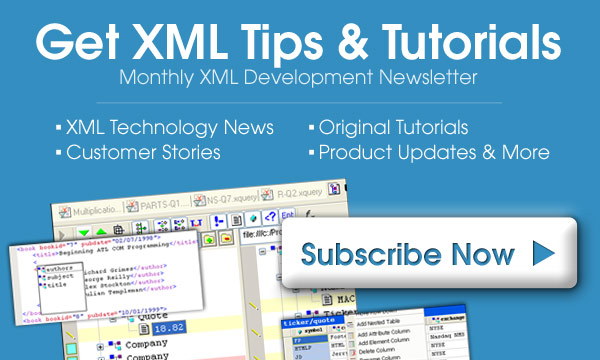|
[XML-DEV Mailing List Archive Home] [By Thread] [By Date] [Recent Entries] [Reply To This Message] Re: Rules of Thumb for Creating XML Vocabularies for Workflow Applicatio
Costello, Roger L. wrote:
> The list below contains guidelines for creating XML vocabularies for
> workflow applications. In XML-based workflow applications the XML
> documents are routed, and may be modified at various stops along the
> route.
>
> RULES OF THUMB FOR CREATING XML VOCABULARIES FOR WORKFLOW
> APPLICATIONS
>
> 1. An XML vocabulary does not exist in a vacuum. It exists for some
> purpose or purposes.
Is that not a given? Do you mean to convey the fact that the quality of
an XML vocabulary may be judged by its fitness for purpose? I'd agree
with that...
> 2. An XML vocabulary must support the data needs of both the data
> producers and the data consumers.
Data producers are irrelevant - they have no needs. There are only the
needs of data consumers. Sometimes a producer may also be a consumer,
but they're distinct roles and should not be conflated.
> 3. An XML vocabulary that is too generic will fail. Focus the XML
> vocabulary to a specific purpose or (small) set of purposes.
The single most critical factor, in my opinion.
> 4. If there is markup (data) needed by the consumers but not the
> producers then make it optional. Thus the producers can omit the
> optional markup while the receivers can add it.
You're conflating producers and consumers again. The original producer
has a clear set of requirements for their downstream recipient. That
recipient also has a clear set of requirements - augment the data and
feed it to another process. It doesn't automatically follow that the
original producer must have some knowledge about how the recipient
intends to augment the data - ideally they wouldn't have a clue. If the
recipient changes their requirements, should the changes really flow
back to the original producer? You'd hope not... see point 3.
> 5. Design flexibility and extensibility into the XML vocabulary, but
> do not try to predict the future.
Sounds good...
> 6. Modularize the XML vocabulary. Create the XML vocabulary as an
> assembly of building blocks ("data components").
As long as the assembly and understanding of the building blocks doesn't
cause more overhead than what it's trying to solve. Sometimes for a
well-defined system, it's just as easy to diff the schemas for the
various processes as it is to manage the structures.
> 7. Split out markup (data) that is optional and specific to the
> consumers. One technique, for example, is for the consumer to add the
> data that is specific to him in an envelope that wraps the producer's
> data. The envelope topology is one approach to component-based
> design; many others are possible and should be explored.
I think that there are too many possibilities to bother trying to
generalize. My guide would be to store the additional data in a way that
makes it most fit for purpose for the immediate downstream recipient(s),
but that doesn't say anything very helpful either.
Marcus
[Date Prev] | [Thread Prev] | [Thread Next] | [Date Next] -- [Date Index] | [Thread Index] |
PURCHASE STYLUS STUDIO ONLINE TODAY!Purchasing Stylus Studio from our online shop is Easy, Secure and Value Priced! Download The World's Best XML IDE!Accelerate XML development with our award-winning XML IDE - Download a free trial today! Subscribe in XML format
|
|||||||||

 Cart
Cart








